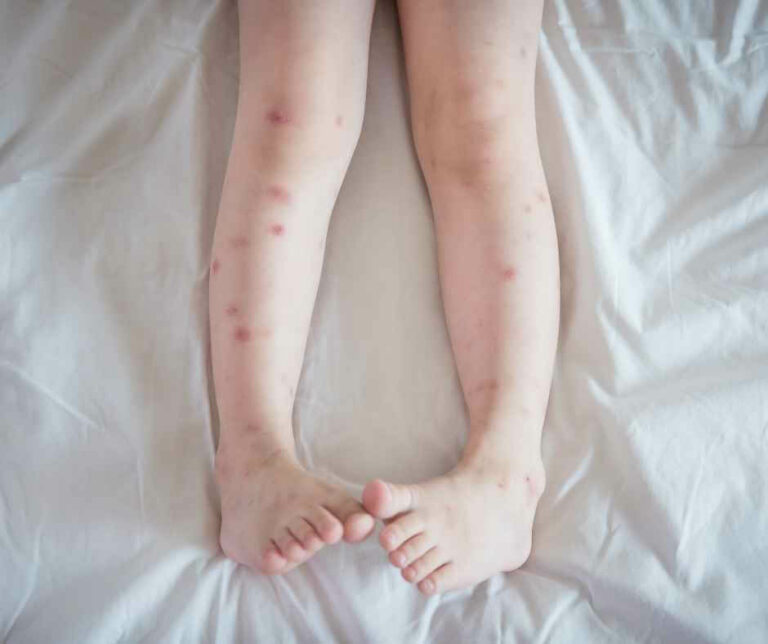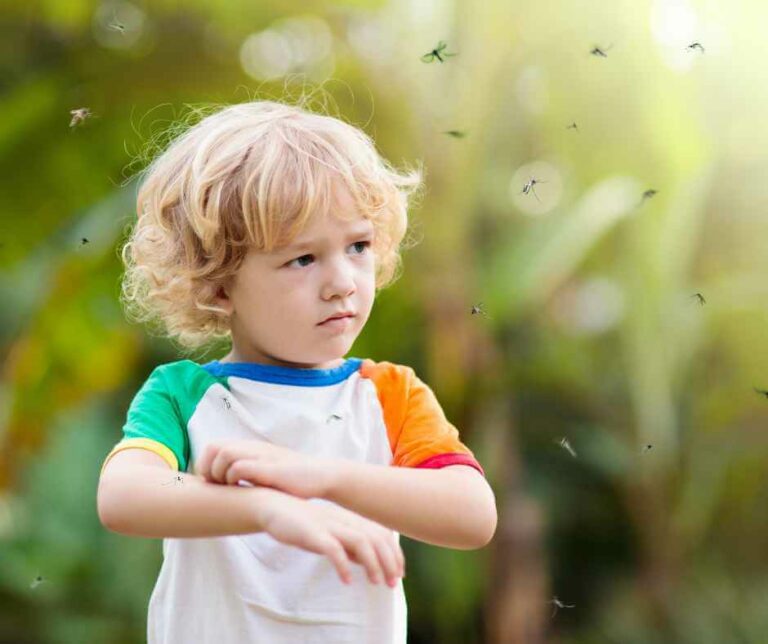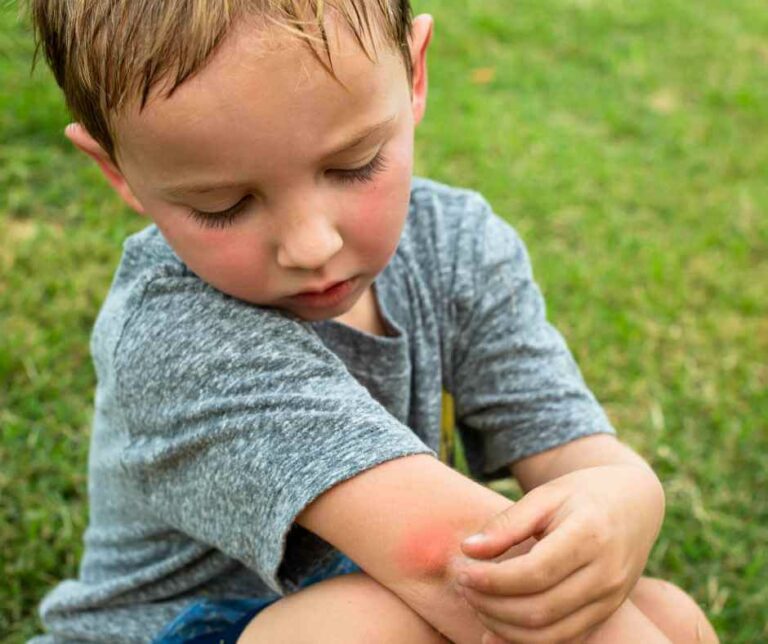Bites and Stings First Aid For a Child

In Australia, we are surrounded by insects and beasties due to the lovely warm and sometimes tropical climate. However, first of all, let’s remember that most insect bites and stings are not poisonous.
In this blog post you will find some signs, symptoms and treatments for bites and stings, including what to WATCH OUT for!
Bites and Stings First Aid in Australia
The picture above, is a suspected Whitetail Spider bite on my good friends 2 year old girl. The ulcer formed overnight. This is when the skin breaks down due to the bite and venom.
Some signs and symptoms of an insect bite can be –
- Painful itchy lesion at the site of the bite
- Swelling and redness
- Sometimes a blister
- Hives or rash (sometimes widespread)
- Sometimes the area can get worse over hours or days
Sometimes an insect bite or sting can cause a severe allergic reaction (anaphylaxis) signs of this can include –
- Coughing &/or wheezing
- Difficulty breathing or swallowing
- A change in their voice/cry
- Swelling of the tongue
- Dizziness (older child)
- Pale or floppy (younger child)
- Abdominal pain/vomiting (not a sign of anaphylaxis with food but is in stings and bites)
If your child has any of the symptoms of anaphylaxis above, call an ambulance immediately.

Bites and Stings First Aid
What to do if your child is stung by a bee
- Carefully scrape the sing out, do not pinch it. This could cause more poison to be injected.
- Wash the area with cool water
- Apply a cold flannel to help with pain or swelling
- Elevate the limb if there is swelling
- You can give antihistamines or pain relief &/or apply a steroid cream for relief.
- Remember: At the first signs of a severe allergic reaction, call an ambulance.
In the video below, we are talking about bee stings, wasp stings, and tick bites. Baby and child first aid for these kind of injuries can vary slightly.
Although a tick bite or a bee sting can be excruciatingly painful, most often they don’t cause any severe problems. You can have anaphylaxis to bites and stings, but they are quite rare.
It can cause widespread pain around the area, and it can become quite red and painful.
But normally, that’s the extent of it. It usually doesn’t end up being much more of a reaction than that. Stings around the face can cause serious envenomation and difficulty breathing even though a person may not have been allergic before.
When bees sting, they leave a little sack of venom, which they’ll continue to inject from. You have to be really careful, and it continues to eject into the skin, whereas wasps, ants and similar creatures can sting you more than once, injecting toxins.
We have to be careful with ticks. And although you may not feel a tick like latching on, you may not see it or know it’s there until it becomes quite large. They can inject a toxin that can cause irritants to the skin. They can also cause an allergic reaction like anaphylaxis, as can any of these. These can be life-threatening; it doesn’t just have to be food that causes these severe reactions, and there doesn’t need to have been any previous exposure to these kinds of things.
We have to remember that with anaphylaxis, with food, there are specific symptoms, which are tightness in your throat, a change in the voice, persistent cough and dizziness which is a blood pressure dropping.
But one of the symptoms of food allergy, one of the mild to moderate symptoms, is abdominal pain and vomiting, whereas, with a sting or a bite from an insect, abdominal pain and vomiting are signs of anaphylaxis.
With a bee sting, what you should do is remove it by any means possible, try and find a leaf or a card or a credit card for instance.

With a tick, we must use caution. If you do find that you’ve got a tick on you, don’t panic and try to remove it immediately; the best way that you can remove a tick is by freezing it off using something like wart spray. Take yourself to the nearest chemist or your GP. This way you’re going to kill it without squeezing it or doing anything that will make it inject anything further into you.
First aid for bites and stings
If your child is not having a reaction, then just using a cold compress would be absolutely fine. There’s really not a lot else that you can do for these kinds of things if you’re not having a reaction but just remember to remove those stings, as quickly as possible so that they don’t continue to inject venom into you and with a tick, you have to have to freeze them first.
Want more? We’ve got you covered…
Our Baby First Aid Courses
Our baby first aid courses are available in person in your home and online. We run classes in your home with groups of 2, 4 or up to 10 in Sydney & Melbourne and you can book in 3 easy steps!
- Pick your class
- Follow the prompts to purchase
- We will contact you within 24 hours to lock in your date of choice
Our First Aid Certificate Courses
We run most of the popular first aid courses Australia wide. HLTAID011 Provide First Aid, HLTAID009 Provide CPR, HLTAID012 Provide First Aid in an Education & Care Setting, RAMOAP (anaphylaxis), Mental Health first aid and CPR/LVR to name a few.
Book your public spot online or contact us if you have a group of 5+ people for onsite training.
Here are some other resources you may enjoy!
FREE GUIDE: Your Virtual Baby First Aid Kit
FREE GUIDE: Introducing Common Allergy Foods & Allergic Reactions
FREE Workplace Emergency Preparedness Plan: Grab this at the bottom of every page!
Follow for baby & child first aid and allergy info and tips on Instagram, TikTok & Facebook all @thenestcpr
